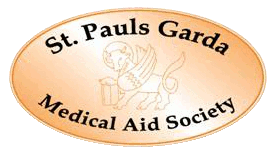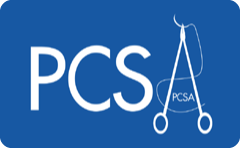 Download this information as a PDF
Download this information as a PDF
You recently had a small operation on your skin and examination of the sample under the microscope showed that the problem was a malignant melanoma, a type of skin cancer. You may have a lot of questions and worries, and the purpose of this leaflet is to help with some of them, but not to be a substitute for a good conversation with your specialist. It is a good idea to:
- Write down all the questions you would like answered and bring them to your next visit.
- Bring another family member or close friend so that you can both discuss the information after your visit and be sure that you both have the same memory of what was said. This will help your family understand what has happened which makes it in turn easier for you to cope with a worrying situation.
How will I be followed up?
Your melanoma was in the skin and has been removed by either one or two operations. After these the majority of people who have had melanomas of a similar thickness as yours remain well with no further problems, but because just over one in ten do develop signs of melanoma spread, we plan to see you back at the clinic for regular check-ups. At these visits, we will:
- Look at and feel your scar.
- Check the lymph glands in your groin or armpit to be sure none are bigger than normal.
- Give you a total body skin examination to be sure that you do not have another small early treatable melanoma (once you have had one melanoma you are at increased risk of developing a second so we aim to identify and treat this as soon as possible. See Table 1, below.)
Some people with melanoma have a very large number of moles. If you are in this group we may take photographs of some of these moles, and compare your skin with these photos at your clinic visits. Not everyone however needs these photographs.
If you have any worries between visits we will always see you early so do not hesitate to phone 066 7174066 and ask for your appointment to be brought forward.
Why did I get a melanoma?
We also want to know the answer to this question so that we can try to prevent other people developing melanoma in the future. In about two thirds of people with melanoma too much sun exposure is important. This may be a childhood spent in a sunny country, or a history of many sunny summer holidays, particularly if you remember severe sunburn with blistering or peeling. People with melanoma are usually white skinned and have very pale skin which does not tan easily but goes red in the sun. They area often fair or red haired, have blue eyes and may have a lot of both moles and freckles. However, about one third of people with melanoma do not fit into the group described above and may have inherited genes which makes them more likely to develop melanoma. Research in this area is still ongoing.
Are my children more likely to get melanoma?
One melanoma patient in 50 has a history of melanoma in a close relative. If you area in this group your children could be at increased risk. In these families we offer regular skin examinations to all family members. If you do not have a close relative who has also had melanoma your children are not at greater risk, but most families that have had a person with melanoma become very careful and sensible about avoiding sun damage. If any of your family members have unusual moles on their skin, which you would like us to check, we would be happy to see them.
What do I do now?
Most people with melanoma do not tolerate sunbathing well and sunburn could increase your risk of a second melanoma. We therefore suggest that you become very sensible over sun exposure. This does not mean never having a holiday in a sunny country but it does mean avoiding strong noonday sun. Comfortable cotton clothing is an excellent sunscreen, so plan your holiday wardrobe around long cotton trousers or skirts, long sleeved cotton tops and a broad-rimmed hat.
Sunscreen creams, even those called total sunblock, have not yet been shown to protect against melanoma. They do prevent sunburn, so use them as part of your skin protection routine, but not in place of clothing. Remember that you can get sunburned in Ireland as well as on a Spanish beach so do follow the safe sun routine during good weather in this country as well as abroad.
Further information
Please ask us any other questions that are important to you. Women may want to ask about future pregnancies, use of the oral contraceptive or hormone replacement therapy. Advice is best tailored to you personally so do tell us your personal worries. Although there is a large amount of information on the Internet, most of it is aimed at the minority of patients whose melanoma has spread beyond their skin. It therefore does not apply to you, and you may find it unnecessarily alarming.
Warning signs to look out for in a mole:
Melanomas usually arise from freckles or moles. The warning signs to look out for is any one of the following three major signs:
A mole or freckle that is getting bigger (change in size).
Or
A mole or freckle that is changing in shape: Most moles are round or oval with a symmetrical shape. When a mole develops an irregular border, it is a bad sign.
Or
A mole or freckle that changes colour: most moles are an even shade of light or dark brown. When a mole develops irregular shades of colour it is a bad sign.
If any of your moles develop any one of the above signs you should contact Dr Buckley immediately as early detection and removal of a malignant melanoma can be life saving. Other minor warning signs to look out for in a mole or a freckle are as follows:
- Itch
- Size greater than the head of a pencil (i.e. >7mm).
- Bleeding or crusting
- Inflammation














